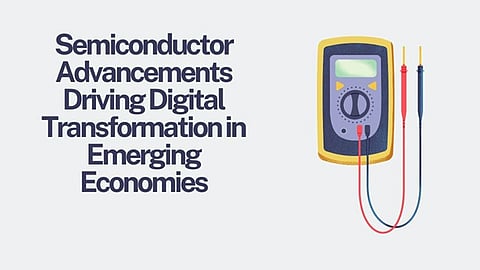

In this new world, semiconductor technology becomes a pillar for digital transformation in developing economies. An expert in low-power verification is Sharvani Mukkala. He discusses the effects of using semiconductors at large on the connectivity of mobile technologies and affordable access to other services around the world. Mobile banking, mobile healthcare, and mobile education represent very innovative ways of using semiconductors in providing digital means to hitherto underserved classes.
The continuous innovations changes and effects upon semiconductor manufacturing have resulted in drastic reduction in essential components' cost, with also much improvement on energy consumption efficiency. In fact, the per-transistor cost declined as process nodes shrank and transistors became smaller. This made advanced computing capabilities accessible to emerging markets, as it made more advanced computing capability affordable for them. System-on-chip or SoC that incorporated almost all components on a single chip has been one of the major reasons for production costs savings of up to 40%, while also improving performance metrics. It has made possible the manufacture of cheap smartphones below USD100, and doles connectivity to underserved markets.
Arguably, the primary enabler of digital connectivity is semiconductors. However, with the increasing adoption of mobile devices, extensions of the mobile broadband networks have been made possible across most low and middle-income countries. By 2024, it is expected that 96% of populations in LMICs will be covered by mobile broadband networks-in excess of earlier estimates-driving the expansion of digital infrastructures in these countries. The significant part of this penetration has been in rural regions of Sub-Saharan Africa, where the uptake of mobile internet over the last few years has made previously unreachable services such as mobile banking, telemedicine, and remote education more readily available.
Affordable smartphones powered by efficient semiconductors have led to a digital financial revolution in developing regions. The rise of mobile banking, particularly in regions like Sub-Saharan Africa, has brought financial services to millions who were previously excluded from the formal banking system. Mobile money services have seen remarkable growth, with millions of people now accessing mobile banking and digital payment systems. In Sub-Saharan Africa, the percentage of adults with mobile money accounts has increased, with a continued upward trajectory expected through 2026. Mobile payment platforms have transformed how people in these regions conduct daily financial transactions, allowing for better financial inclusion and greater economic participation.
The integration of semiconductor technology into healthcare systems has been instrumental in improving medical service delivery in developing regions. The availability of low-cost smartphones and portable devices has enabled the rise of telemedicine, remote patient monitoring, and AI-driven diagnostics, dramatically improving healthcare access and quality. In countries like Rwanda, digital health systems have reduced maternal mortality rates by 30% and increased childhood immunization coverage from 60% to 95%. AI-powered diagnostic tools and portable imaging devices have also helped in early disease detection, particularly in rural areas where specialist care was previously inaccessible.
The COVID-19 pandemic has underscored the importance of semiconductor technologies in ensuring continuity in education. With widespread school closures, mobile devices became the critical tool for remote learning. The accessibility of smartphones, empowered by advanced semiconductor components, allowed educational systems to quickly pivot to online learning. In regions with limited internet connectivity, mobile phones served as a platform for delivering educational content. The World Bank highlighted how countries like Peru and Egypt leveraged mobile learning platforms to reach millions of students, ensuring that education continued despite the global crisis.
The future of semiconductor technology promises even greater advancements, particularly in energy efficiency and mobile connectivity. Emerging trends such as 5G adoption, AI processing, and the Internet of Things (IoT) are expected to accelerate digital transformation in developing economies. As the cost of semiconductor devices continues to fall, sophisticated technologies such as AI, edge computing, and machine learning will become more accessible, creating new opportunities for innovation and growth. Furthermore, as the demand for energy-efficient solutions grows, the semiconductor industry is focusing on low-power designs, ensuring that emerging technologies can be deployed in resource-constrained environments.
In conclusion, Sharvani Mukkala’s work sheds light on how semiconductor technology is reshaping developing economies. Through affordable mobile devices, digital payments, remote healthcare, and education solutions, semiconductors are enabling unprecedented access to essential services. As the demand for cost-effective and energy-efficient solutions continues to rise, semiconductor innovations will play a crucial role in ensuring digital inclusion and economic development in emerging markets. The continued evolution of semiconductor technologies holds the promise of a more connected, equitable, and prosperous future for millions around the world.
